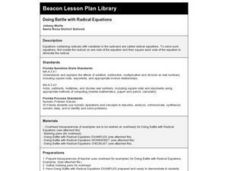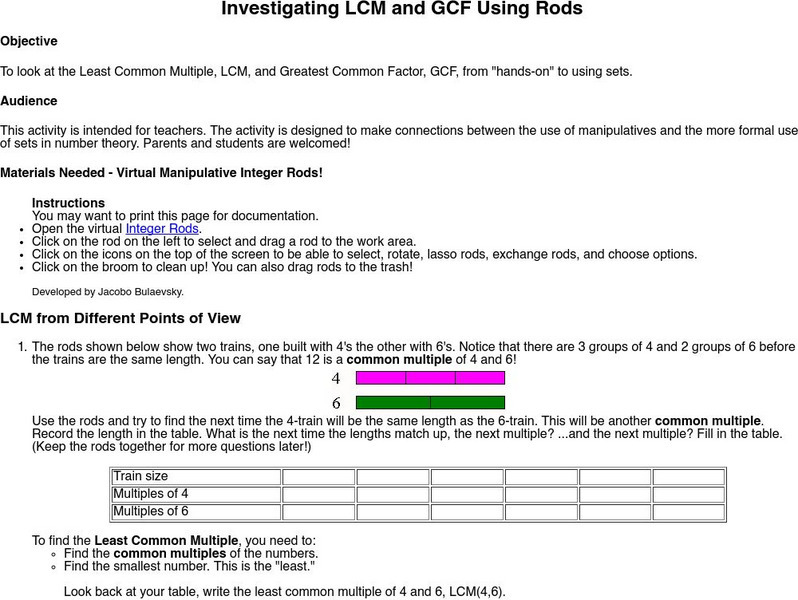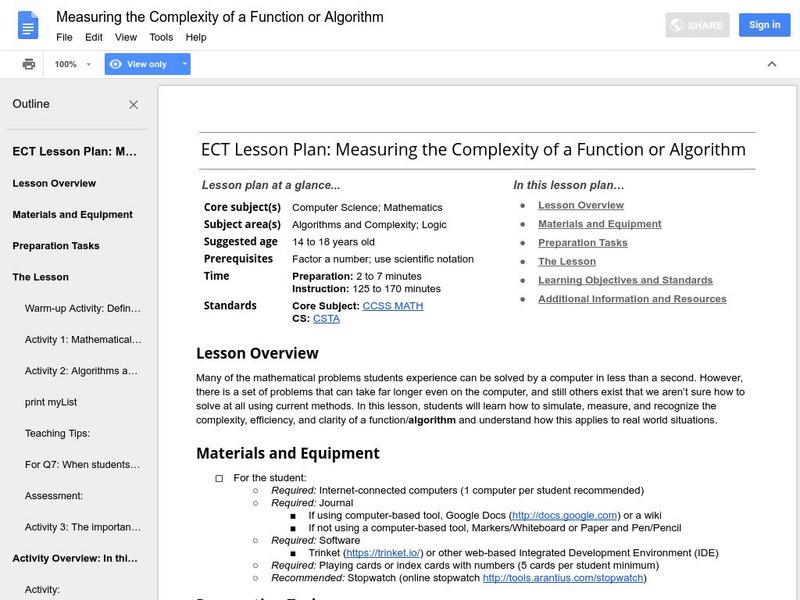Curated OER
My Son is Naughty
Learners find factors of numbers; work systematically; and use logic to explain away certain possible number combinations. They then devise and use problem solving strategies to explore situations mathematically.
Curated OER
TI-89 Activities for PreCalculus and AP Calculus
Using the TI-89 calculator, students explore the statistical, graphical and symbolic capabilities of the TI-89. Students investigate topics such as solving systems of equations, finding inverse functions, summations, parametrics...
Curated OER
One Hundred Hungry Ants (Multiplication and Division)
Fourth graders explore factors of numbers from 1 to 50. They gain practice with basic facts and multi-digit multiplication problems. Students practice the commutative property. They discover the link between multiplication and...
PBS
The Housing Crisis: GDP, Housing Bubble, Recession
Secondary pupils examine the housing bubble and the 2008 and global economic crisis. Defining GDP and GDP growth, recession, and bubbles, young economists debate what makes a bubble and how housing can be an economic indicator....
Curated OER
Euclidean Algorithm
Learners are introduced to the concept of a Greatest Common Divisor. They review the number systems. Students are told how the entire field of Number Theory primarily uses the integers. They are told the Fundamental Theorem of Algebra.
Curated OER
Doing Battle With Radical Equations
Students observe and solve examples of equations involving radicals. They complete a Doing Battle With Radical Equations worksheet and checklist.
Curated OER
Is Your Square Complete?
Students practice solving quadratic equations using a form called Complete the Square.
Curated OER
Pascal's Triangle
Students study Pascal's triangle. They construct their own version of Pascal's triangle, and relate some of the uses for it. While working through this process, students practice their integer multiplication and division skills.
Curated OER
Area graphics for 7th graders
Pupils randomly select dimensions for three geometric shapes (square, right triangle and circle). From the graphs they compare and contrast the graphical results of each shape.
Curated OER
Mixed Expressions and Complex Fractions
Students are introduced to mixed expressions and complex fractions. They work through several problems with the instructor and then complete a worksheet.
Curated OER
How Large is a Mole of M&M's
Young scholars calculate whether or not a mole of M&M's fill their high school. They practice factor-labeling, define a mole, and calculate the number of cubic feet per mole of M&M's. To answer the question they measure and...
Alabama Learning Exchange
Alex: Hanging Out With Prime Factorization
During this lesson, students will review factors, prime and composite numbers. Students will also create a mobile that show the prime factorization of the number of their choice. This lesson plan was created as a result of the Girls...
Other
Nearpod: Quadratic Equations: Intro & Factoring
In this lesson, students will learn the main parts of a parabola and solve quadratic equations by factoring.
Alabama Learning Exchange
Alex: "Factoring by Mack"
This strategy for factoring trinomials will eliminate the trial-and-error method used in most textbooks.The lesson plan will be a direct teaching lesson plan. With the teacher lecturing and the students taking notes and then having the...
Illustrative Mathematics
Illustrative Mathematics: A Apr Zeroes and Factorization of a General Polynomial
In this task, students investigate the properties of a polynomial of degree d > 0. The task relates to the Fundamental Theorem of Algebra. Aligns with A-APR.B.2.
Alabama Learning Exchange
Alex: My Favorite Number
The activity allows students to review many of the number theory concepts. Students will pick a composite number write verbal expressions about the number, find the factors, prime factorization, list multiples, draw a cartoon character...
George Mason University
Margo Mankus: Investigating Lcm and Gcf Using Rods
This lesson plan is for an activity using rods (Cuisenaire Bars) to help students understand the concept of factors, in particular the LCM and GCF of two numbers.
Google
Google for Education: Measuring Complexity of Function or Algorithm
In this lesson, students learn how to measure the complexity of the function or algorithm in a math problem and understand how this applies to real world situations.

















